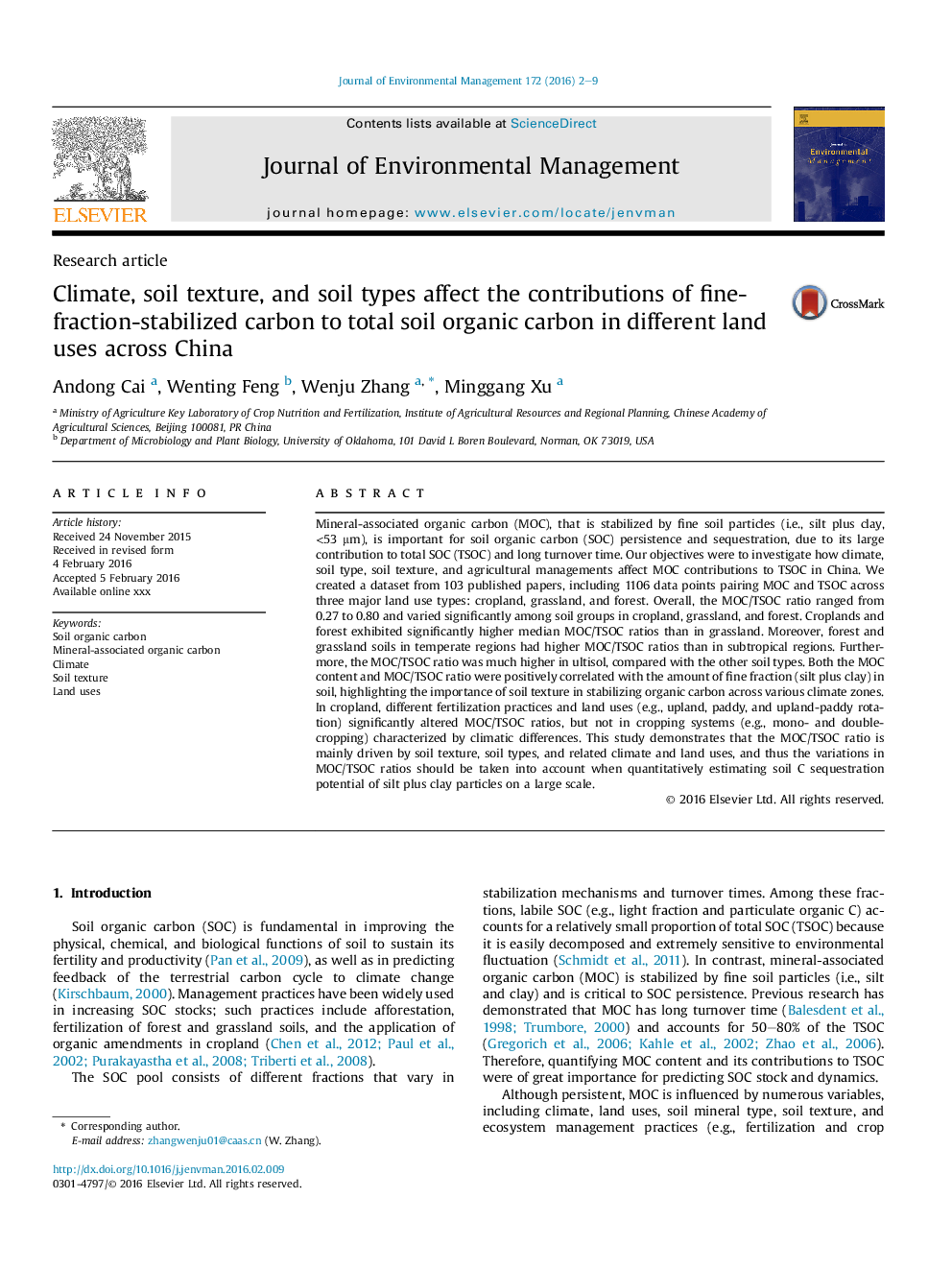| Article ID | Journal | Published Year | Pages | File Type |
|---|---|---|---|---|
| 7480536 | Journal of Environmental Management | 2016 | 8 Pages |
Abstract
Mineral-associated organic carbon (MOC), that is stabilized by fine soil particles (i.e., silt plus clay, <53 μm), is important for soil organic carbon (SOC) persistence and sequestration, due to its large contribution to total SOC (TSOC) and long turnover time. Our objectives were to investigate how climate, soil type, soil texture, and agricultural managements affect MOC contributions to TSOC in China. We created a dataset from 103 published papers, including 1106 data points pairing MOC and TSOC across three major land use types: cropland, grassland, and forest. Overall, the MOC/TSOC ratio ranged from 0.27 to 0.80 and varied significantly among soil groups in cropland, grassland, and forest. Croplands and forest exhibited significantly higher median MOC/TSOC ratios than in grassland. Moreover, forest and grassland soils in temperate regions had higher MOC/TSOC ratios than in subtropical regions. Furthermore, the MOC/TSOC ratio was much higher in ultisol, compared with the other soil types. Both the MOC content and MOC/TSOC ratio were positively correlated with the amount of fine fraction (silt plus clay) in soil, highlighting the importance of soil texture in stabilizing organic carbon across various climate zones. In cropland, different fertilization practices and land uses (e.g., upland, paddy, and upland-paddy rotation) significantly altered MOC/TSOC ratios, but not in cropping systems (e.g., mono- and double-cropping) characterized by climatic differences. This study demonstrates that the MOC/TSOC ratio is mainly driven by soil texture, soil types, and related climate and land uses, and thus the variations in MOC/TSOC ratios should be taken into account when quantitatively estimating soil C sequestration potential of silt plus clay particles on a large scale.
Related Topics
Physical Sciences and Engineering
Energy
Renewable Energy, Sustainability and the Environment
Authors
Andong Cai, Wenting Feng, Wenju Zhang, Minggang Xu,
